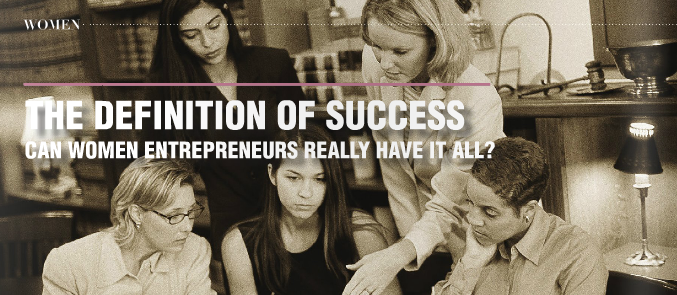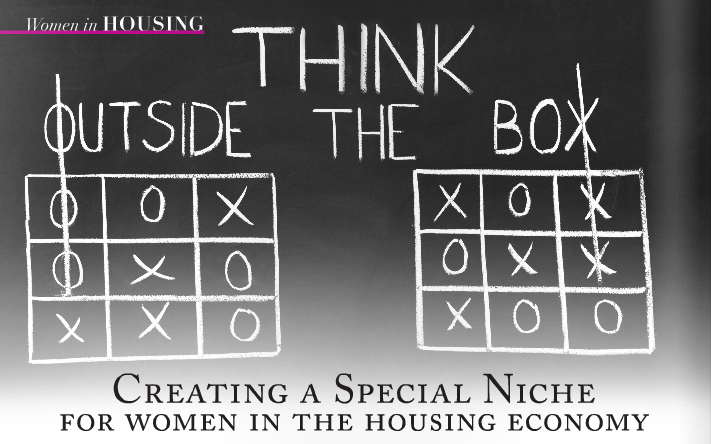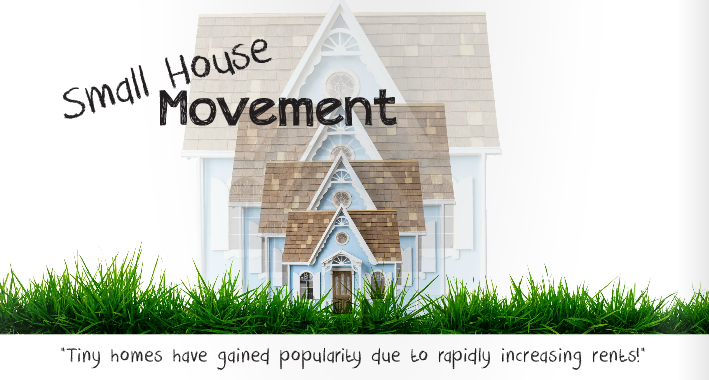Target confirmed Thursday morning that it was investigating a security breach involving stolen credit card and debit card information for 40 million of its retail customers.

Know an Incredible Woman Preserving the
Quality of Life During COVID-19?
Submit your story today!
Read More

Consulting & Branding Opportunities
Grant your business access to insider,
proven knowledge to improve the quality of your procured
services and maximize business performance.

If you need D&I
Contact Us!
A Team Focused on Bring Diversity and Inclusion to Every Level
Learn More

#1 Top Real Estate Influencer
Desiree Patno
Diversity & Inclusion, Quality of Life, Know the Rules of the Game ®
Your Next Event
Grow Your Business
NAWRB: An SBA Resource
NAWRB is listed as a women-owned business resource for the SBA.
Check It Out
NAWRB Aging Population
Help Protect Elders
from Financial Abuse
Over $36.5 billion a year is lost annually in the U.S.
Prevent Financial Abuse

Women's Homeownership:
Dream. Stability. Sanctuary.
Life often presents us
with unplanned disruptions.

AI Technology
with
a Human Touch
Is
The Perfect Balance


NAWRB Women's Global Resource Center
A women’s depository for vendors & clients to grow their diverse spend & increase women’s employment at all levels within the housing ecosystem.

Author Archives: NAWRB
Breast Cancer Drug Halves Cases in High-Risk Women
A landmark study funded by Cancer Research UK has found that the breast cancer drug anastrozole can halve the chances of developing the disease in high-risk women.
Women of Strength
Desirée Patno is excited to announce she will be attending the Women of Strength event on January 9, 2014 in Scottsdale, AZ. This event is a great opportunity to inspire, encourage, mentor, and lead women and others! This is about women coming together and sharing their stories and leaving empowered!
The Definition of Success
Can Women Entrepreneurs really have it all?
The business world has continually evolved as an increasing amount of women have taken corporate America by storm, dominating their male counterparts to rise to positions of power. However, as more women begin to feel restricted by the trappings of a high pressured all consuming position as a corporate employee, women in increasing numbers are seizing the opportunity to start their own business. According to the National Association of Woman Business Owners (NAWBO), as of 2008 there were 10.1 million firms owned by women, and women-owned firms accounted for 40 percent of all privately held firms.
In addition to the increase of women-owned businesses, there has also been an increase in the growth of these businesses which contributes to workforce. A report produced by American Express titled, The 2013 State of Women-Owned Business Report shows the years during the recession from 2007 to 2013, the businesses that have generated a significant increase in employment are large, publicly traded corporations as well as majority-owned companies. In all other privately held firms, employment has dropped.
While women who choose to start their own companies do so for a myriad of reasons, their motivations are distinctly different than those of their male counterparts. Men traditionally cite a desire to increase their income as the primary reason for creating their own business, whereas the majority of women are focused on finding happiness and feeling self fulfilled within their chosen career path. This sentiment is echoed in a recent study produced by the Society for Human Resource Management that found an increase of employees who stated having a work-life balance was essential to their overall job satisfaction.
As women-owned businesses are on the rise, trends are being found within this demographic that emphasizes a woman’s desire to live a complete life. Dr. Erin Albert’s book Single.Women. Entrepreneurs interviewed 30 successful women from corporate America that in turn went on to start their own successful enterprises. The underlying theme to these first-hand accounts is their desire to have more flexibility in their lives as well as create a lifestyle that would allow them to be multi-dimensional and not just focused on their career.

In conjunction to this trend, Albert found during her research that there was no link between women who worked longer hours versus women who brought in more business. In fact she found the reverse to be true. Women who were not predominately focused on their career 80 hours a week were more productive, and tuned-in to their businesses the hours they did work. Albert cites one case study of an entrepreneur that reduced her work load to 32 hours a week and increased her business by 100 percent in the course of a calendar year.
However, while many focus on a work-life balance, it is imperative to define this term as it means different things to different women. Traditionally having a work-life balance meant focusing on work during the day and spending time with your family in the evening. This definition is not inclusive of today’s female entrepreneur who takes this concept and interprets in her own way as it pertains to her lifestyle.
This shift in the meaning of work-life balance creates the need to see past this limiting term and instead focus on what will be fulfilling and satisfying to each woman individually. As women entrepreneurs began their business to define their careers on their own terms, it seems only fitting that they be allowed to do the same for their personal lives. Therefore the question should not be can women have it all, but what priorities are important on a personal level, as having it all is defined differently by each and every woman.
To view the original article please see our magazine titled “Lender/Servicer” Vol 2, Issue 4 by Clicking Here
Renee Smith
Creating a Special Niche for women in the housing economy
As we continue to evolve and reinvent new ideas and strategies in addressing new issues, we must be a leader, mentor and collaboratively work together to strengthen our industry and professional work environment. As many women in the housing economy work tirelessly living commission to commission with a significant pay decrease, it is imperative we expand the awareness and access for opportunities to retain quality, talented women professionals.
As we look at the bare bone basics of real estate, there are two major components:
1) Transferring title of a property or asset
2) Managing a property or asset
With numerous variations within these components, the overall essence is having a contract to perform work. Our goal as a real estate agent, lender, escrow officer, contractor and associated services is to build relationships to capture first time clients with repeat and referral business as we contribute and engage with our communities to grow our business portfolio with extended outreach.
As the market has taken a large swing in volume of properties being sold to being managed, we have to look at our business model and ask, “Are we passionate on being in the industry?” Margaret Kelly, CEO of RE/MAX, recently stated, “The low inventory… sure, it’s an issue and we need to look at it, but we’re still talking about 4.9-5 million sales. With that many properties available for sale, agents should be asking themselves, ‘What’s really going on in the market?’” As there are many variations within real estate, a lender, title and escrow officer can still produce income with a refinance of a home, while most income for agents is derived from the transfer of a property besides property management. With the amount of properties transferring ownership and the incredible corresponding amount of business being contracted, we are still seeing professionals leaving the business in droves through retirement, technology issues, and not being able to deal with the new demands of increased work load per contract and compliance issues.
How do we create more opportunities and experiences to retain talented women professionals in the housing economy? Growing your existing business and expanding your business portfolio outside “the box” is essential to staying competitive and financially sound. Within the industry to help with education and awareness, NAWRB created the Women In Housing Financial Fitness Road Show. By taking the elements of two specialized markets–women in housing and women in government– individual to corporate and government contracting, we have developed our Fast Track niche to bring the awareness, opportunities and access to offset living commission to commission. Learn about access to business growth with loans from as little as $25,000 from the SBA to hire that much-needed assistant or expand your marketing, or $200 million Diversified Securities from Morgan Stanley to service those high net worth individuals. Imagine receiving a grass cutting contract, not normal property management, to cut grass at a couple of commercial buildings for $88,000 a year, and then growing that same contract to $1.9 million a year within two years! There are so many ways of working within the industry or with a property. By working directly for a financial institution, homeowner, hedge fund, non-profit, developer, property manager, government agency or attorney, you can take your existing skill set and explore a hybrid. Do you want to become the preferred title company/contractor for your local city on all their transactions? How about being the local real estate expert on land development? Think of how many individuals and companies come in contact with your local city each year! Your bread and butter needs to become a producing bakery that can be managed and nurtured with the right amount of special ingredients, You!

With new relationships, you create additional opportunities to grow and with newfound enthusiasm, you will increase a way of giving back or being involved within your community. We all have to find within ourselves what we truly have as a unique gift or are passionate about. NAWRB would love to hear Your Special Niche. Please submit an article to media@www.nawrb.com to share your growth to help expand NAWRB’s awareness as we travel throughout the nation.
To view the original article please see our magazine titled “Trending Now” Vol 3, Issue 4 by Clicking Here
Clay Malcolm
Desiree Patno
Small House Movement
A housing trend has gained prominence across the nation as a solution to looming issues such as foreclosures, skyrocketing rents in urban cities, and increased debt. The trend, known as the Small House Movement, refers to the switch from traditional homes to smaller, minimalist homes typically under 400 square feet. These homes are usually referred to as ‘tiny homes.’ Although the percentage of foreclosures has decreased since the recession, there were still 1.4 million foreclosures in the United States in 2013. The Small House Movement has allowed former homeowners to escape a future of hefty mortgage payments and regain their independence.
High-Priced Rents
Tiny homes have also gained popularity due to rapidly increasing rents. A recent study regarding New York rental prices revealed that rent in Brooklyn and Manhattan is at a five-year peak with an average rental price at $4,008 in Manhattan and $3,209 in Brooklyn. Other dense, urban areas are experiencing similar growth. San Francisco, for example, is no stranger to escalating rents. Rent in San Francisco has now become three times more than the national average. A growing amount of people are finding it impossible to not only pay their rent but find affordable housing in cities nationwide.
Sleek and Functional Designs
The Small House Movement combats the rent issue with micro-apartments in major cities although the movement is also comprised of tiny homes that have the option of attached wheels for mobility. The housing layout of both designs use innovative techniques to maximize space and include many of the same components of a traditional home such as a bedroom, bathroom, kitchen, dining room, and den. Architects utilize everything imaginable for storage so that clutter is avoided and a spacious feel is added. Most notably, Hong Kong architect Gary Chang has transformed his 344 square foot apartment into a spacious home with luxurious amenities such as a wet bar, steam room, and library. His secret? Chang uses a combination of hidden sliding doors and compartments that transforms a simple area into nearly any type of room desired. Other design techniques include stairs that double as individual drawers for storage, vanity mirrors with storage space that pop out of floorboards, and tables that rise up and rest against the wall for impromptu shelves. Although many people that participate in small space living use it as their main form of housing, tiny homes have also become a trend among those who want spare offices, in-law quarters, or simply a spare room for guests.

Tiny vs. Traditional
Micro-apartments aside, the average cost of a tiny home is approximately $23,000 if built by the owner rather than a contractor. In contrast, the average price of a home at the end of 2013 was $321,200. However, the tiny home price can dramatically reduce if the consumer chooses to build a tiny home out of reclaimed materials. Although this may take more time, many people are more than willing to wait. Some companies will also provide the ‘shells’ of tiny homes in addition to holding workshops on how to build a tiny home. It is a win-win for both parties since consumers can cut costs by building their own homes and companies can spare their time and labor by transferring it onto the consumer. However, the price can easily skyrocket up to $80,000 if a contractor builds the home in addition to any add-ons such as upscale appliances and materials.
It is important to note that even a hefty start-up cost will reap future benefits due to a lack of mortgage and minimal maintenance. An eliminated mortgage allows people to focus on paying their debts and saving money which is the reason why many choose small space living in the first place. With all of their newfound savings, a growing number of those living in tiny homes have either quit their jobs for more fulfilling occupations or switched from full-time to part-time in order to pursue other passions. With a tiny home comes renewed freedom for many.
Nevertheless, the small space lifestyle is not meant for everyone. A tiny home or micro-apartment can typically house a maximum of two people. In addition, living in small quarters can lose its appeal over time for some. So who does small space living attract? People who live in tiny homes range from retirees who want to downsize, those looking for more affordable living, and people who want to reduce their debt and/or carbon footprint.
Concerns
People who want to build a tiny home may run into multiple issues, depending on their county. Regions differ in the amount of square footage that requires a building permit. Plumbing and electrical permits may also be required. Some builders can bypass a building permit requirement by constructing their home on a trailer platform which makes it a vehicle. In addition to permits, tiny homes may clash with local zoning codes. It is important to meet with local government to figure out the specific laws for the chosen county.
In addition, property prices and zoning codes are prominent issues. This can be non-existent if one simply situates a tiny home on existing property such as a backyard. However, many people forgo traditional housing in lieu of solely living in a tiny home. Some states have small, affordable plots of land available for rent with little restrictions. Other states have costly land that negates the savings a tiny home provides. To solve this problem, people have taken to living in remote areas, the property of friends, or even RV parks.
Novelty or Permanent Fixture?
In 2012, the growing Small House Movement gained considerable coverage when the mayor of New York City, Michael Bloomberg, announced a design competition regarding micro-apartments. At the time, New York City reported 1.8 million households that contained one to two persons. Small households are the ideal profile for micro-apartments. Much like tiny houses, micro-apartments use all of the same sleek and modern design techniques without the hassle of having to locate a property. Mayor Bloomberg’s competition—adAPT NYC—requested proposals for the design, operation, and construction of a micro-unit apartment building in New York City. The building would be constructed on a city-owned site. Bloomberg created the competition in order to keep up with New York City’s growing housing demands.
Regarding the competition, the New York City Department of Housing Preservation and Development (HPD) Commissioner Matthew Wambua stated, “The remarkable number of high-quality responses to the adapt NYC RFP validates the position that developing micro-unit living is both financially and physically feasible in the New York City landscape.”
Similarly, expensive housing markets nationwide have followed in New York’s footsteps with micro-apartment developments. Some of the housing markets with current micro-apartment developments include Cleveland, San Francisco, Los Angeles, and Boston.
The fact that micro-apartments and tiny homes have had an unwavering presence for years, shows this trend may be more than just a niche. Rather, these alternative living solutions have proven essential to evolving housing markets and population growth. From those who are craving simplified lifestyles, to those seeking affordable housing and beyond, the small house movement is clearly making a name for itself.

To view the original article please see our magazine titled “Trending Now” Vol 3, Issue 4 by Clicking Here
NAWRB Announces Roaring Twenty Annual Award Winners Featuring Industry Leaders
IRVINE, CA – The National Association of Women in Real Estate Business (NAWRB) is proud to announce our 2014 annual award winners highlighting outstanding women in the housing economy. This year we feature eleven extraordinary women in the featured categories, and for the first year we have co-winners as both nominee’s contributions to their community were immeasurable.
The list of awardees is as follows:
The Flapper: Cayce Macias
The Talkie: Tami Bonnell
The Gatsby: Brigitte Respaut Clement
The Spirit of St. Louis: Amy Brandt
The Chanel: Donna Nazir
The Chrysler: Debbie Oliver
The Disney: Nancy Welsh
The Gershwin: Patricia Arvielo
The Charleston: Monica Vacas & Vandana Chima Bhalla
The Women’s Voice Award: Barbara Kasoff
We recognize these outstanding women in the Housing Economy for their professional achievements. Each award is in keeping with the spirit of the 1920’s, pulling inspiration from this diverse and dynamic decade, as it is a distinct representation of the women in this industry. Each award name was featured after a unique individual, theme, or event that transpired during this period of time.
We will be spotlighting each woman in our Roaring Twenty Spread along with this year’s nine leading ladies, which will be featured in our upcoming Double Issue of N Magazine.
NAWRB is the most visible women’s trade association specializing in the Housing Economy. As the only provider of Women-Owned Business (WOB) and Minority Women-Owned Business (MWOB) certifications specific to real estate, NAWRB is dedicated to the access and advocacy of professional women and women business owners Specializing in the Housing Economy, SHE is Changing Real Estate™.
2015 NAWRB Conference Roaring Twenty Awards
 Login
Login








